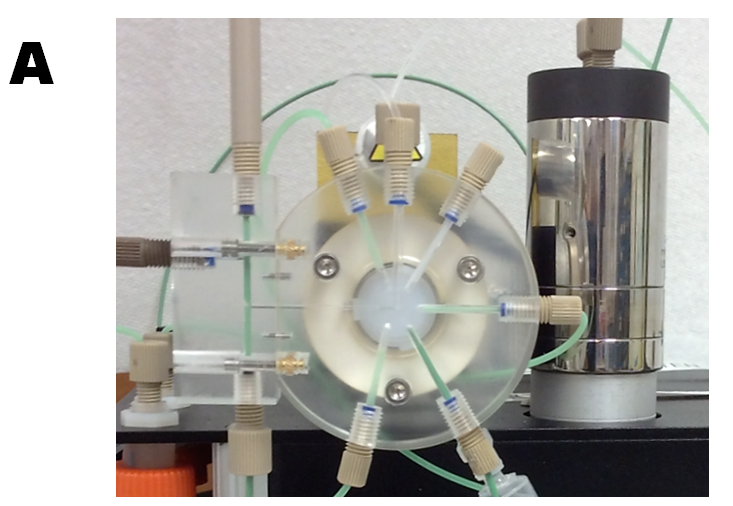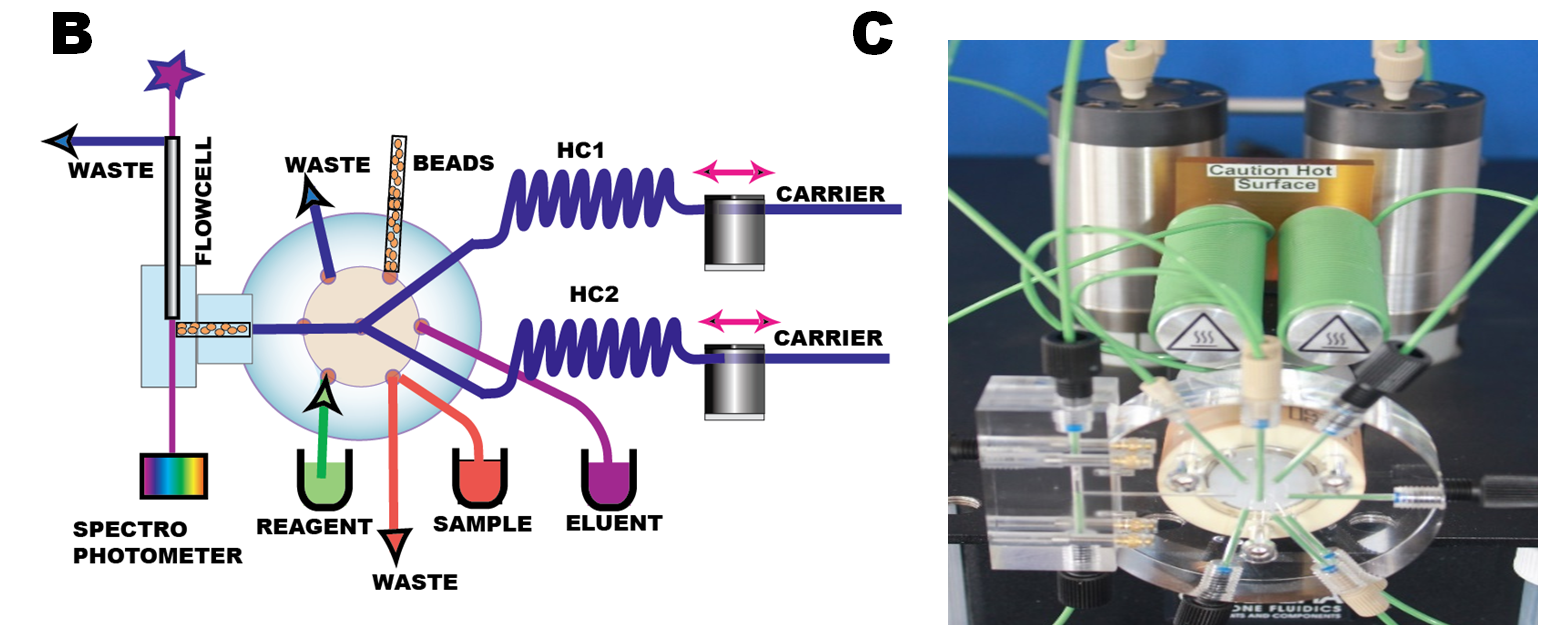Flow programming and miniaturization of flow system are the essential components that makes BI technique feasible. Therefore it was the combination of Sequential Injection technique (Chapter 2.), with lab-on-valve microfluidics that was the first platform on which bead injection instruments have been designed. However, the recent advances in micro pumping and the novel concept of programmable Flow Injection (pFI) expands the range of tools and instruments suitable for BI. pFI offers a wider range of microfluidic manipulations of which sample/reagent confluence is the most important one, because it allows to processing of sample volumes that are much larger than those handled by SI. This novel, useful feature is highlighted in this Tutorial by example of assay of traces of iron (1.3.14.B.)
The experiments with BiS and RCC described in this Chapter were carried out with a single syringe driven microSI Instrument that is no longer advertised on FIAlab website. However, the miniSIA-1 (A) and miniSIA-2 (C) instruments (Global FIA) will be suitable for BI and SIC applications, when furnished with appropriately modified LOV module.
BI in Sequential and programmable FI format
3.1.3.A.
Automated sorbent extraction (B) was carried out in pFI mode by using miniSIA-2 instrument (C), furnished with 1cm long 1.6mm I.D. micro column sandwiched between the LOV and long light path flow cell. (Global FIA). The column material was replaced , as needed , from bead reservoir filled with OASIS HLB polymeric beads (Waters Corp.)











